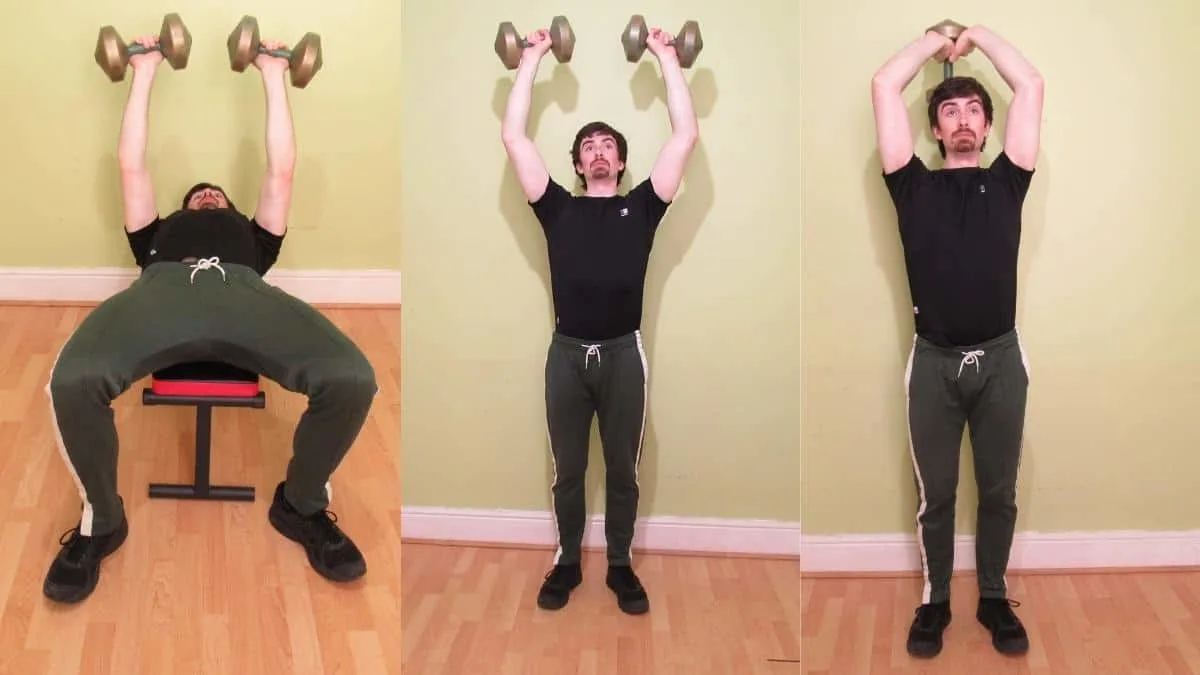It’s a great idea to perform a chest shoulder tricep workout because there’s a lot of overlap between these three muscle groups. For example, the bench press heavily works your front delts and triceps, which makes it a great overall mass builder.
However, in order to get the most from your chest shoulders and triceps workout routine, you need to employ an intelligent exercise selection. Each movement that you include in your routine should have a purpose and work your muscles differently.
After all, why include two exercises in your chest shoulder triceps workout that train your muscles in the exact same way or from the exact same angle?
With that in mind, you’ll be happy to know that I’ve already done the heavy lifting for you by creating a full chest shoulder and tricep workout routine that you can follow to get your upper body growing.
Related Workouts:
- Back and triceps workout
- Shoulders and triceps workout
- Chest and tricep dumbbell workout
- Back bi and shoulder workout
The best chest shoulder tricep workout routine for building muscle
This high-volume chest triceps shoulder workout will train your pushing muscles from every angle to stimulate maximum hypertrophy.
Yet, you can also modify this template as you see fit. For example, if you already have a big chest but need more deltoid development, then you could start with shoulder presses.
Also, you can do each movement with various equipment. So while I might recommend cables, you could use dumbbells or even bands and get pretty much identical results.
Exercises marked A and B indicate a superset. I’ve paired certain exercises together that don’t interfere with one another so that you can save time.
In terms of rest periods, I recommend resting 2-4 minutes between sets of compound presses and around one minute between sets of isolation exercises (if you’re doing a superset, perform both exercises in the superset and then rest for a minute or so).
Exercise 1: Barbell bench press — 3-5 sets of 6-8 reps
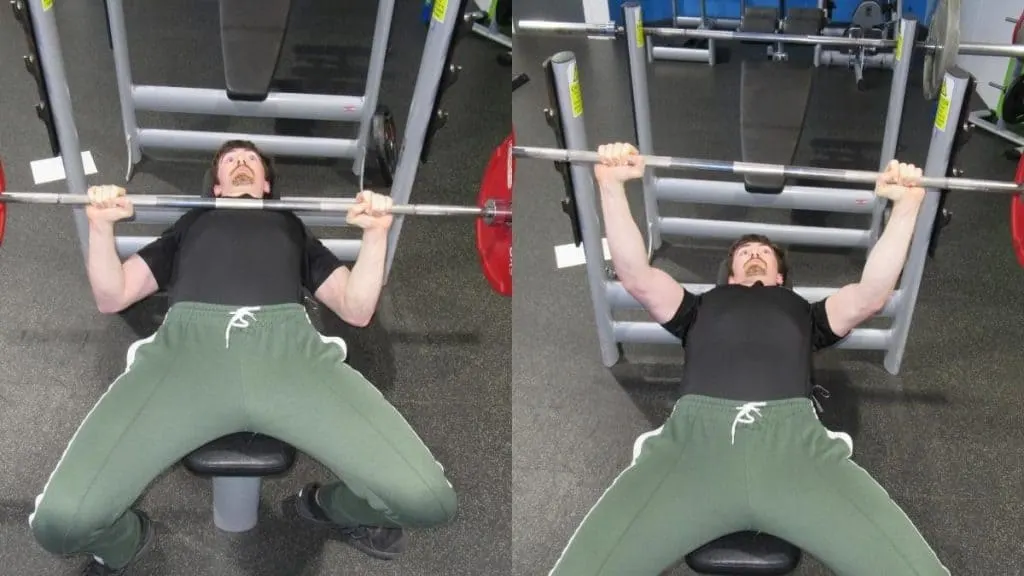
You probably saw this one coming, but its obviousness doesn’t make the flat barbell bench press a bad exercise in any way—for most people.
While the bench press can be a troublesome exercise shoulder-wise for some lifters, it’s the mass-building gift that keeps on giving for virtually every gym-goer.
Since the chest and triceps contain a lot of fast-twitch muscle fibers, these two muscles respond excellently to heavy, explosive, low rep lifting—and the bench press is the ideal exercise for performing this style of training.
While you won’t be maxing out on the bench press while performing this bodybuilding-style chest tricep shoulder workout, you’ll still be doing low reps, so make sure that you do a good few warm-up sets beforehand to acclimate your muscles, joints, and tendons to the heavy barbell resistance.
Exercise 2: Incline dumbbell press — 3-5 sets of 8-12 reps

You can never have too much upper chest development as a natural lifter. As such, it makes sense to perform some kind of incline press in every chest workout that you perform.
The incline dumbbell press is a great choice in this regard because it helps you to get a better pump, contraction, and stretch in your pecs than the barbell version.
Another benefit of the incline DB press is that it helps you to build a proportional chest by ensuring that both of your pecs get similar amounts of stimulation, which could actually encourage you to keep the barbell straight during regular bench presses.
Just make sure that you don’t overdo the incline. Setting the backrest at 30 degrees is ideal for most lifters because it emphasizes the upper chest while still allowing you to push decently heavy weight.
You can try 45 degrees as well, which will be best for some people, but you might start to feel your front delts more than your upper chest. Try both angles and see which one you prefer.
Exercise 3A: Chest fly — 3-5 sets of 12-15 reps
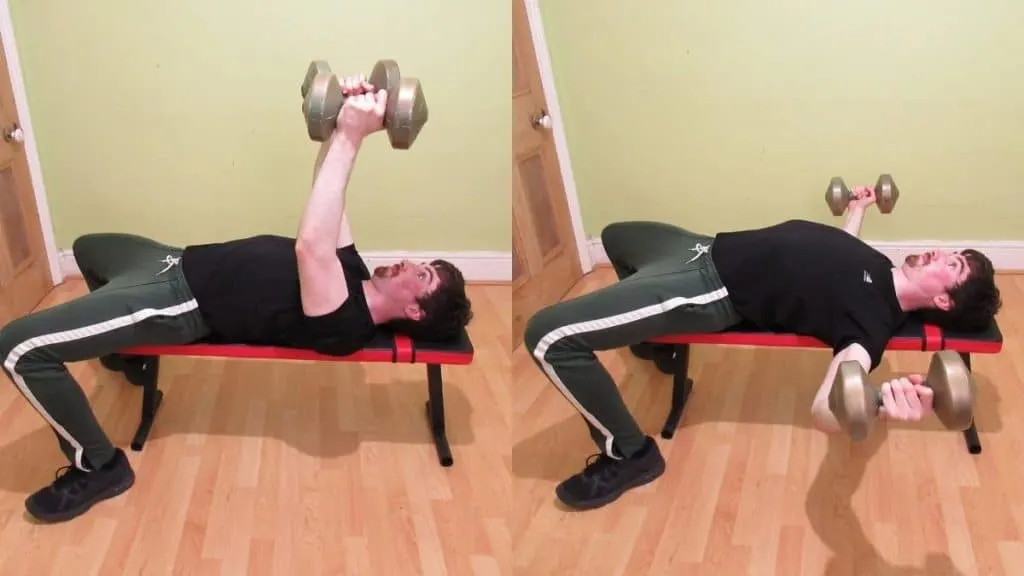
The chest fly makes an excellent addition to any hypertrophy-focused chest tricep and shoulder workout because it really pumps up your chest and trains muscle fibers that bench presses may otherwise leave understimulated.
I like to do flys with cables or machines so that I can emphasize the contraction portion of the rep rather than the stretch phase, which is already taken care of with bench presses.
Sure, the front delts are still active during flys, but your chest will be doing the vast majority of the work if you use good form.
Focus on bringing your upper arms across your body to contract your pecs. The position of the handles/machine/dumbbells is less important than where your upper arms are because the pecs act on the shoulder joint, not on your wrists.
Exercise 3B: Lateral raise — 3-5 sets of 10-15 reps
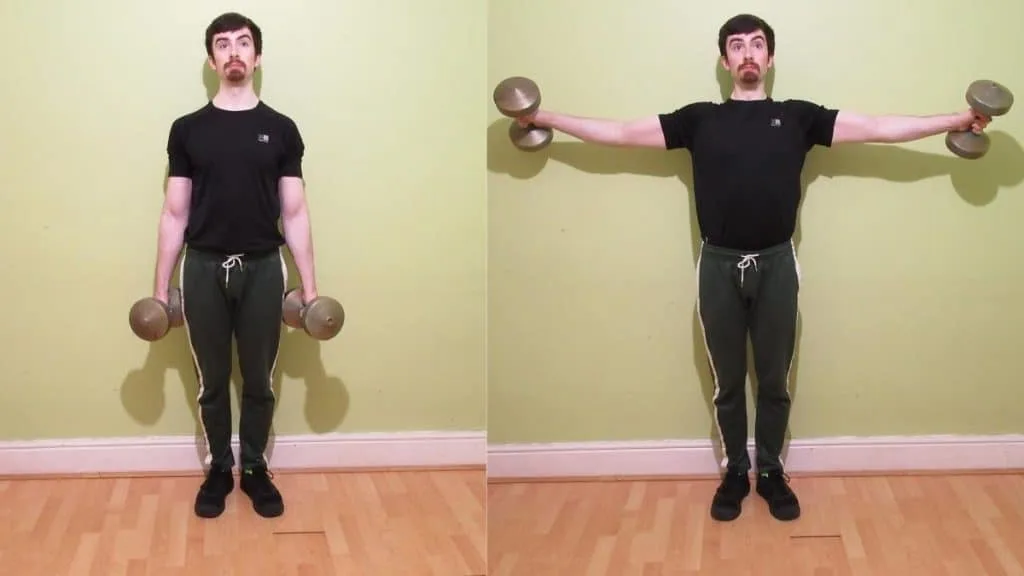
If you want to develop deltoids that stand out, then you need to do lateral raises. Best suited to high rep training to really pump up your side delts, you can do lateral raises with dumbbells, cables, and bands.
I’ve paired lateral raises and chest flys together in this chest triceps and shoulders workout because they work different muscles, meaning that they won’t interfere with each other (unless you have really bad cardiovascular fitness).
In terms of technique, lift the dumbbells out to the sides until your upper arms form a 90-degree angle with your torso. You could go higher, especially if you want to train your upper traps, but then you’d increase your risk of straining your rotator cuffs, which is why I recommend stopping at 90 degrees.
Also, do not internally rotate your shoulders during lateral raises. Yet, internal rotation of the glenohumeral joint does increase side delt activation, but it does so at the great expense of your shoulder health.
Exercise 4A: Front raise — 3-5 sets of 10-15 reps
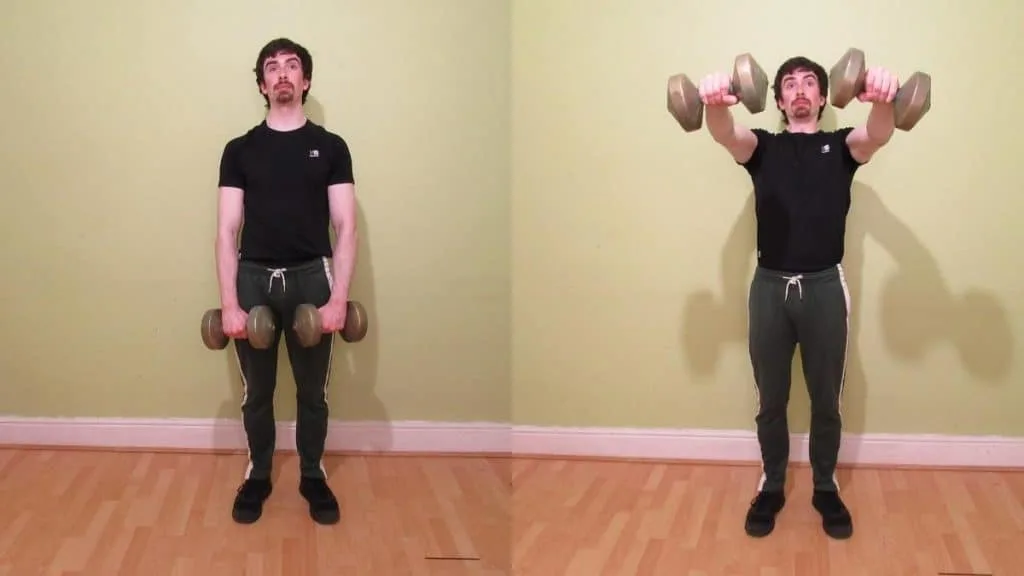
Although there are no shoulder presses in this chest shoulders triceps workout, front raises and two chest presses are more than enough work for the anterior deltoids.
You could swap out front raises for shoulder presses, but I like front raises because they’re the best exercise for isolating your front delts. Plus, they’re easy to pair with various other exercises to create a time-saving superset.
Make sure to really control the eccentric portion of your front raise reps so that you can give your shoulders the strongest possible muscle-building stimulus. There are no prizes for lifting as heavy as possible during isolation exercises.
Exercise 4B: Overhead tricep extension — 3-5 sets of 12-15 reps
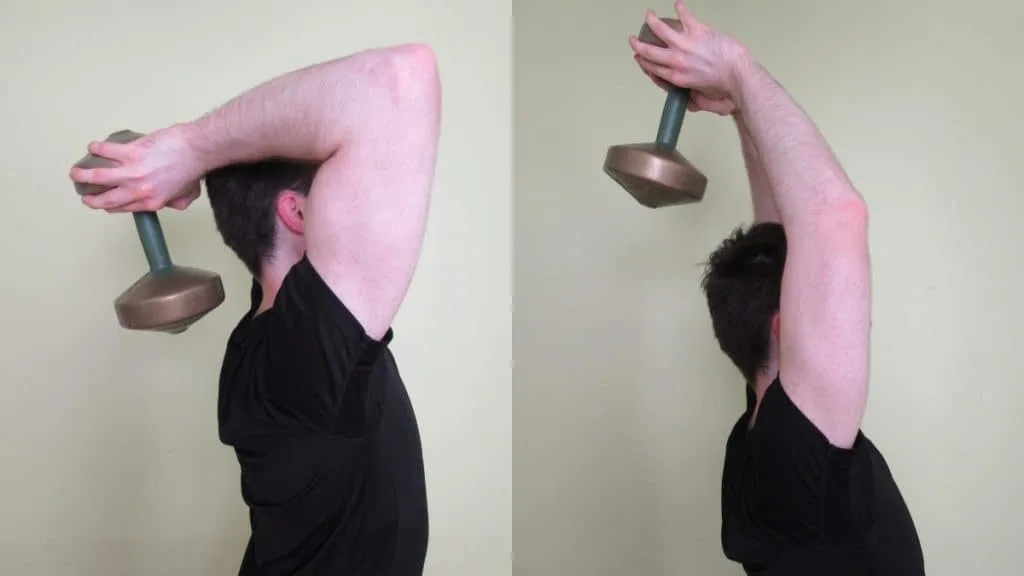
No chest shoulder tricep routine is complete without some kind of overhead extension. The reason for this is that, unlike the lateral and medial heads of the triceps, the long head crosses the shoulder joint.
Therefore, you need to put your shoulders into flexion to give the long head the stretch that it needs to grow. In practice, this usually means doing some kind of overhead extension (barbell, dumbbell, single-arm, etc.).
However, you can also do a lying tricep extension and get identical results because the shoulder position is the same (your triceps don’t care whether you’re standing up or lying down).
For best results during any kind of tricep extension, make sure to get a full stretch (your forearms should press right up against your biceps) and a complete contraction (lock your elbows out, it’s the primary function of the triceps).
Exercise 5A: Rear delt fly — 3-5 sets of 12-15 reps
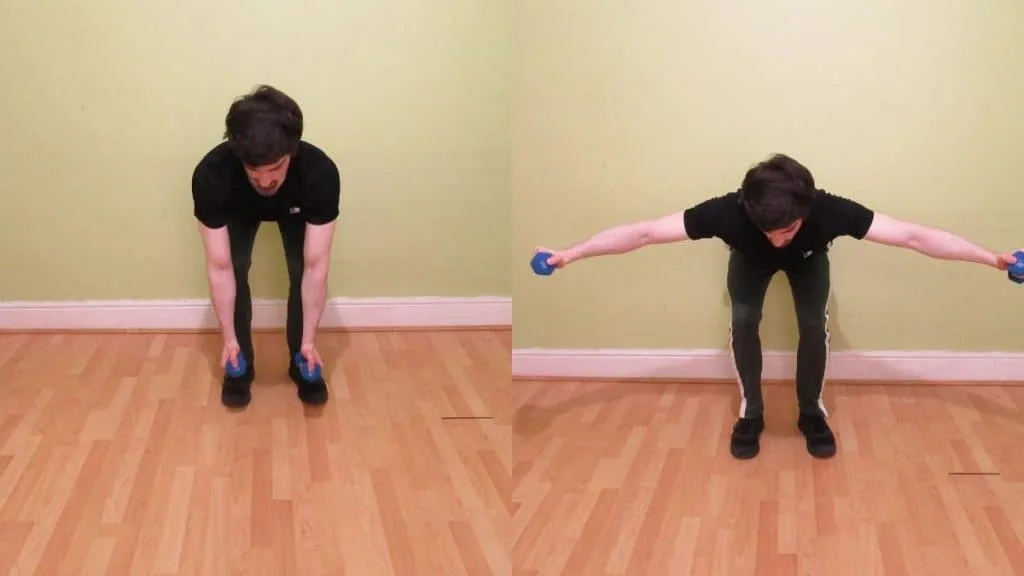
Although you can definitely do your rear delt exercises when training your back, I included some rear delt flys in this chest shoulder tricep workout because, let’s be honest: Can you ever have too much rear delt development?
I don’t think so. Considering how much bigger most people’s front delts are, growing your rear delts is only ever a good thing if you want to have balanced shoulders.
For this reason, it can make sense to train your posterior deltoids multiple times per week, especially considering that rear delt flys don’t cause much muscle damage.
Cables are my training tool of choice for working the rear delts, but you can also use dumbbells or the pec fly machine in reverse and get virtually identical results. Now for the final exercise in the chest shoulder tricep workout; pushdowns.
Exercise 5B: Tricep pushdown — 3-5 sets of 15-20 reps
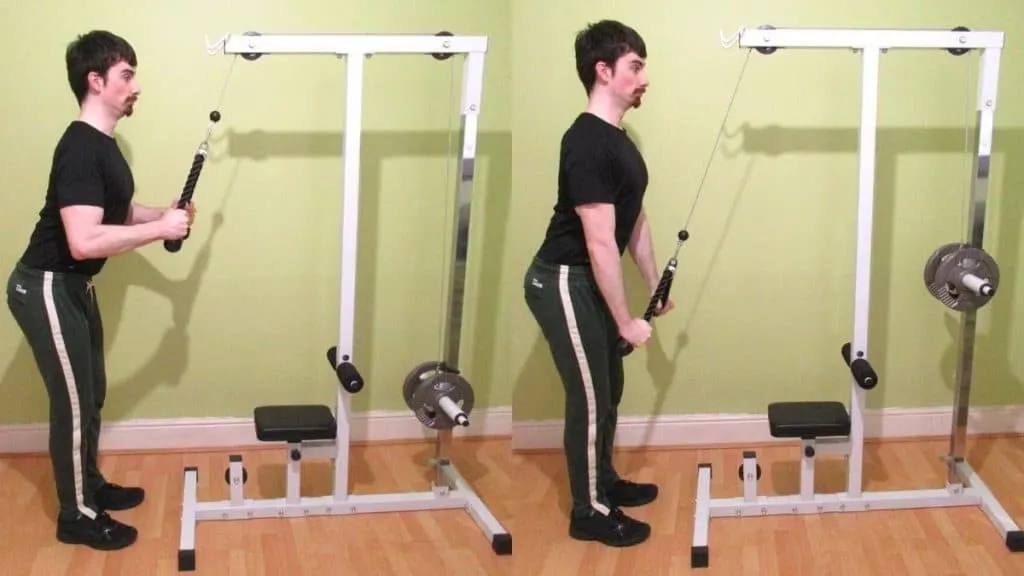
The cable pushdown is a great way to round off our chest shoulder triceps workout because it’s a pure isolation exercise that’s best suited to high reps.
Pushdowns are incredibly versatile by their very nature because they’re customizable with different attachments and various grips. For maximum muscle activation and an unbelievable peak contraction, I recommend using the rope attachment because it gives you the most freedom of movement.
I paired the pushdown with rear delt flys because you can do them both with cables. However, you could always do face pulls if reverse flys feel awkward on your particular cable machine.
Conclusion: What makes a good chest shoulders and triceps workout?
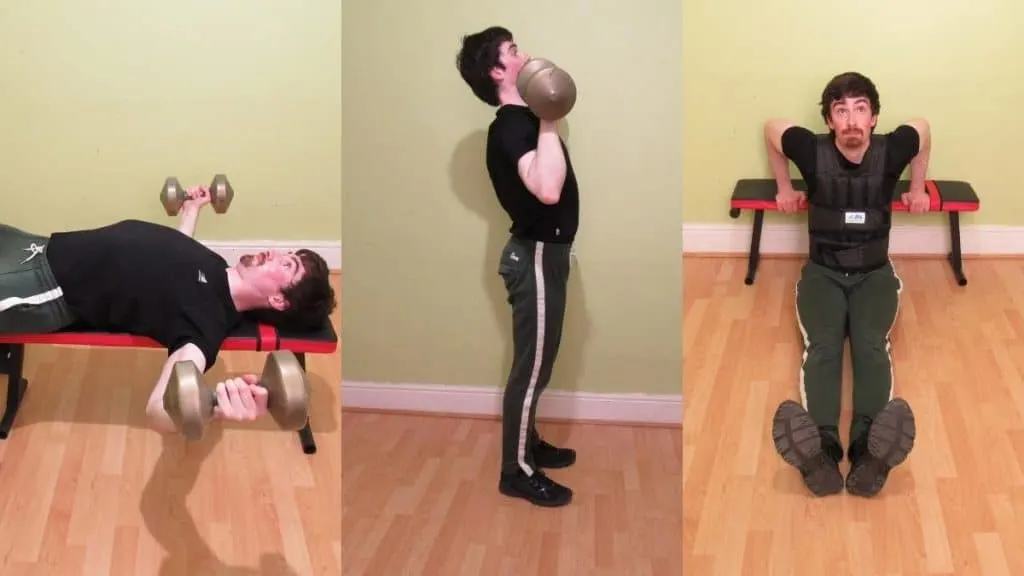
As mentioned, a good chest shoulders and triceps workout routine should train your pushing muscles from every angle so that you can maximize your muscle growth.
In practice, this means performing an exercise for the lower and mid-chest as well as the upper chest and then finishing your pecs off with some kind of fly.
Since the triceps already receive plenty of stimulation from your heavy presses, they don’t need a ton of work from isolation exercises. Still, some kind of overhead extension is a must-do in your chest triceps shoulder workout because it trains the long head of the triceps optimally.
As for the delts, make sure to train them with some kind of lateral raise and reverse fly so that you can create a balanced upper body. Front raises are obviously great for bulking up your shoulders, but they’re optional since your anterior deltoids already get hammered during any kind of vertical or horizontal press.
References
- Serrano, N., Colenso-Semple, L. M., Lazauskus, K. K., Siu, J. W., Bagley, J. R., Lockie, R. G., Costa, P. B., & Galpin, A. J. (2019). Extraordinary fast-twitch fiber abundance in elite weightlifters. PLOS ONE, 14(3), e0207975. https://doi.org/10.1371/journal.pone.0207975
- Physiopedia. (2022). Glenohumeral Joint. https://www.physio-pedia.com/Glenohumeral_Joint

